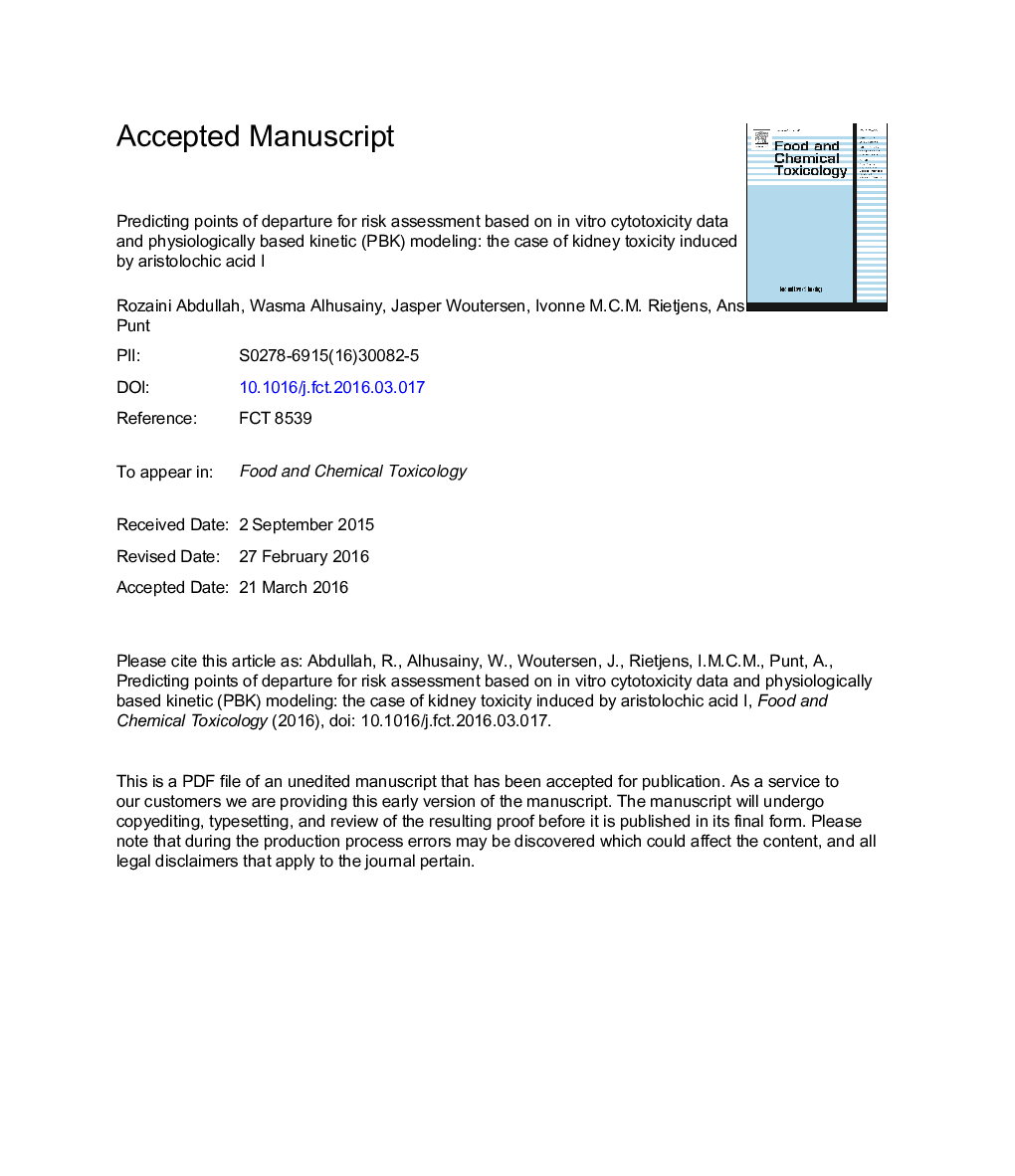| کد مقاله | کد نشریه | سال انتشار | مقاله انگلیسی | نسخه تمام متن |
|---|---|---|---|---|
| 5849335 | 1561752 | 2016 | 53 صفحه PDF | دانلود رایگان |
عنوان انگلیسی مقاله ISI
Predicting points of departure for risk assessment based on in vitro cytotoxicity data and physiologically based kinetic (PBK) modeling: The case of kidney toxicity induced by aristolochic acid I
دانلود مقاله + سفارش ترجمه
دانلود مقاله ISI انگلیسی
رایگان برای ایرانیان
کلمات کلیدی
NOAELBMCLPBKaristolochic acid IIBMDLLOAELTDIAAICmaxaristolochic acid I - Aristolochic acid IAUC - AUCADI - NAMEAAN - ONRisk assessment - ارزیابی ریسکAristolochic acid - اسید Aristolochicmaximum concentration - حداکثر غلظتAcceptable daily intake - دریافت روزانه قابل قبولPods - شاخه هاphysiologically based kinetic - فیزیولوژیکی مبتنی بر جنبشی استPhysiologically based pharmacokinetic (PBPK) model - مدل فیزیولوژیکی مبتنی بر فارماکوکینتیک (PBPK)Kidney toxicity - مسمومیت کلیهTolerable daily intake - مصرف روزانه قابل تحملarea under the curve - منطقه تحت منحنیaristolochic acid nephropathy - نفروپاتی اسید آرئیستلوکیکAAII - نهNo observed adverse effect level - هیچ عوارض جانبی مشاهده نشدهLowest observed adverse effect level - کمترین میزان بروز ناخواسته مشاهده شده
موضوعات مرتبط
علوم زیستی و بیوفناوری
علوم کشاورزی و بیولوژیک
دانش تغذیه
پیش نمایش صفحه اول مقاله

چکیده انگلیسی
Aristolochic acids are naturally occurring nephrotoxins. This study aims to investigate whether physiologically based kinetic (PBK) model-based reverse dosimetry could convert in vitro concentration-response curves of aristolochic acid I (AAI) to in vivo dose response-curves for nephrotoxicity in rat, mouse and human. To achieve this extrapolation, PBK models were developed for AAI in these different species. Subsequently, concentration-response curves obtained from in vitro cytotoxicity models were translated to in vivo dose-response curves using PBK model-based reverse dosimetry. From the predicted in vivo dose-response curves, points of departure (PODs) for risk assessment could be derived. The PBK models elucidated species differences in the kinetics of AAI with the overall catalytic efficiency for metabolic conversion of AAI to aristolochic acid Ia (AAIa) being 2-fold higher for rat and 64-fold higher for mouse than human. Results show that the predicted PODs generally fall within the range of PODs derived from the available in vivo studies. This study provides proof of principle for a new method to predict a POD for in vivo nephrotoxicity by integrating in vitro toxicity testing with in silico PBK model-based reverse dosimetry.
ناشر
Database: Elsevier - ScienceDirect (ساینس دایرکت)
Journal: Food and Chemical Toxicology - Volume 92, June 2016, Pages 104-116
Journal: Food and Chemical Toxicology - Volume 92, June 2016, Pages 104-116
نویسندگان
Rozaini Abdullah, Wasma Alhusainy, Jasper Woutersen, Ivonne M.C.M. Rietjens, Ans Punt,